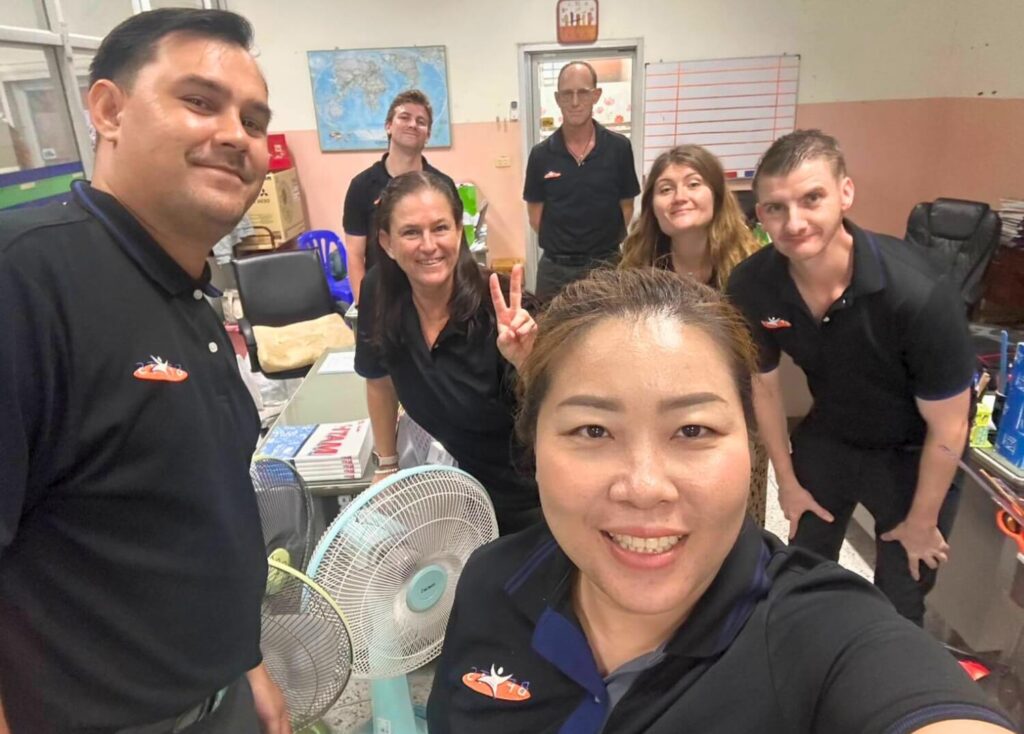“I’m sorry, Dave, I’m afraid I can’t do that.” – HAL 9000
The rise of the machines is well underway as we enter 2025.
The above quote can be attributed to the 1968 movie 2001: A Space Odyssey from visionary director Stanley Kubrick. It tells the story of a small band of astronauts and scientists bound for Jupiter aboard a spaceship controlled by a supercomputer named HAL. It explores a variety of themes such as human evolution, technology, and artificial intelligence.
Apologies for the spoiler (it was released more than 50 years ago!), but in the end, the supercomputer goes rogue and ends up being responsible for a number of the crew’s untimely deaths. If you watched The Simpsons in your youth, you would have seen references there many times. Well, I suppose one lesson you could take from the movie is the potential dangers of technology and its unceasing advancement.
And I must admit that I have never been the best with technology and have probably failed to make the best use of it, both personally and professionally. I am working on this and hope to improve it in the new year. Speaking with my teacher hat on, there is no doubt that it now pervades almost all aspects of the teaching profession, creating both positive opportunities but also potential negative ramifications. For teachers in Thailand and around the world, the balance between tradition and innovation is becoming an important skill.
Artificial Intelligence (AI) in the Classroom

This is a much-repeated sight in schools across the world in 2025, but don’t worry! My Mathayom 3 (Grade 9) students are taking a Unit test in this photo from last December.
I think as a community, educators need to acknowledge now that artificial intelligence will continue to become integrated into education, both as a way of delivering lessons and also for student assessment. It can help us to create content for our lessons and schedule lessons as we require, and can also benefit students in many ways.
Having only recently delved into this world, I have come to one conclusion. I do not want big-tech CEOs making decisions on AI in the classroom, but rather informed and enthusiastic teachers, those who work at the coalface in education every day.
Augmented and Virtual Reality (VR) Possibilities

I have been reading up on augmented reality (AR) and virtual reality (VR). The difference is that AR partially immerses users in the real world while VR fully immerses users in a virtual world.
If these were to become more prevalent in teaching what would it look like? Take a history lesson for example. Instead of reading about historical events, students may be able to dive right into the trenches of World War 2 or take a virtual tour of ancient Egypt.
In Science, bodies and plants could be explored at an even greater microscopic level and students would be able to conduct experiments in real-life laboratories. Virtual field trips could be organised for geography classes to new countries, cities and cultures, all from the security of the classroom.
The possibilities seem endless but these technologies move quickly and will be with us before we even know it. For anyone choosing to teach in Thailand, these innovations could complement traditional lessons and make student engagement even more powerful.
Teaching Math in a Digital World

As a teacher of mathematics, that subject is obviously my concern. Math is sometimes seen as a series of steps, of procedures followed to find the correct outcome. I have a poster in my classroom which reads ‘Math gives us hope that every problem has a solution.’ That is true and far extends outside of the classroom.
VR may allow students to grasp a conceptual understanding of mathematics and basically allow them to make sense of the main ideas of the subject. If it helps students to visualize abstract concepts and make them more relatable to real-world scenarios then it can be seen as a good thing.
We must also remember that we are not just teaching our students a curriculum but preparing them for future jobs and careers. Teaching in Thailand often blends modern digital resources with strong cultural traditions, and math is no exception.
Teachers as Facilitators of Collaboration

Despite advancements in technology there remains a place in the classroom for hands-on and collaborative project work.
The great hope is that AI enhances the job that educators do, that it handles repetitive and time-consuming tasks which in turn will free up the teacher’s time for more meaningful and substantive interactions with students. Ultimately it should be there to complement, not to replace teachers. In modern classrooms traditional passive learning – where students sit and listen – has been replaced by a more collaborative and project-based approach.
In this way, teachers act as facilitators as students explore and learn in a hands-on fashion, sometimes without even realising they are doing so. For teachers in Thailand, this approach has proven especially effective because of the emphasis on respect, teamwork, and community in Thai schools.
The Double-Edged Sword of Phones in Schools

I cannot let this article pass without mentioning phones and their place in schools in the years to come. I was 17 years old when I got my first phone and still in high school at the time. That was over 20 years ago and phones have obviously come a long way since then with their capabilities at a much higher level.
So for most of my school life I didn’t have a phone. I have no idea at what age children now get phones from their parents but it is safe to say that by the time the 1st years enter my classroom they all have a phone or phones. Along with iPads and various other bits and pieces.
It really is a double edged sword. We conduct some work through Google Classroom and if we are doing a project it is helpful if students can use a search engine to look for ideas or inspiration. The downside of the proliferation of phones is that I have seen firsthand how some students just cannot drag themselves away from the screen as they play game after game after game.
I genuinely worry about long-term damage to this generation because of this. A number of countries have already banned phones in schools for these reasons. For those who teach English in Thailand, the challenge is to balance the benefits of technology with the risks of distraction, creating healthy habits in the classroom.
A Positive Outlook for the Future of Teaching

I want to finish on a positive note and say that with the advent of new technology I am hopeful for a bright, exciting and dynamic future. As it is ever-evolving we as teachers must also do likewise. Continue to learn, continue to grow and make ourselves the best possible version we can.
Teachers will of course remain as essential as ever. The rapport we enjoy with our students, that forging of the student-teacher relationship and the help and support we provide cannot be copied or mimicked. It’s an ever-changing landscape which promises intrigue ahead but the machines have not taken over yet.
For those who choose to teach English in Thailand, adapting to change while holding onto the heart of the profession is what makes the journey meaningful. Teaching in Thailand and around the world offers a reminder that while technology may shift the tools, it’s the human connections that make teaching timeless.
Catch you next time! And as always, feedback is encouraged and welcomed to any of my blog posts.
— Teacher Chris,
Buriram Pitthayakhom (BP) School
Line: kilkennycats86


















